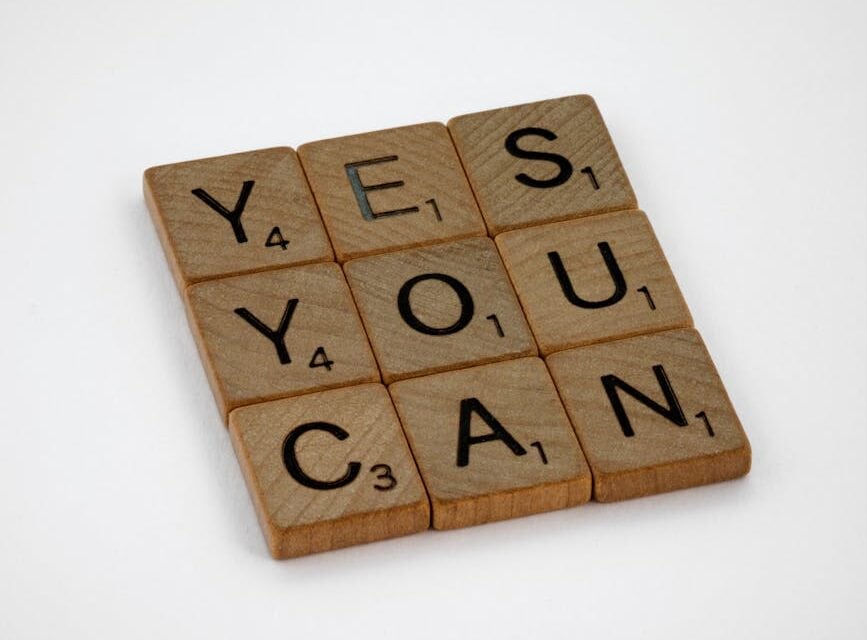“Anticipation Halts Momentum: Markets Pause Before CPI Unveiling”
Introduction
In the lead-up to the highly anticipated release of the Consumer Price Index (CPI) data, financial markets have experienced a noticeable stall, reflecting investor caution and uncertainty. The CPI, a critical indicator of inflationary trends, holds significant sway over market sentiment and monetary policy decisions. As traders and analysts await the latest figures, which will provide insights into the pace of inflation and potential Federal Reserve actions, market participants have adopted a more guarded approach. This pause in the market rally underscores the delicate balance between optimism for economic growth and concerns over rising prices, setting the stage for potential volatility depending on the CPI outcomes.
Impact Of CPI Data On Market Trends
The anticipation surrounding the release of the Consumer Price Index (CPI) data has caused a noticeable pause in the recent market rally, as investors and analysts alike await crucial insights into inflationary trends. The CPI, a key indicator of inflation, measures the average change over time in the prices paid by urban consumers for a market basket of consumer goods and services. As such, it plays a pivotal role in shaping monetary policy decisions and, consequently, market dynamics. In recent months, the market has experienced a robust rally, driven by optimism over economic recovery and corporate earnings. However, the looming CPI data release has introduced a degree of uncertainty, prompting market participants to adopt a more cautious stance.
The significance of the CPI data cannot be overstated, as it directly influences the Federal Reserve’s approach to interest rates. A higher-than-expected CPI reading could signal rising inflationary pressures, potentially prompting the Fed to consider tightening monetary policy sooner than anticipated. This prospect has led to heightened sensitivity among investors, who are keenly aware that any indication of accelerated inflation could disrupt the current market trajectory. Conversely, a lower-than-expected CPI figure might reinforce the Fed’s current stance on maintaining accommodative monetary policy, thereby providing a boost to market sentiment.
In light of these considerations, market participants are closely monitoring the CPI data for any signs of deviation from expected trends. The recent stall in the market rally reflects a collective pause as investors reassess their positions and strategies in anticipation of the data release. This cautious approach underscores the broader impact of inflationary indicators on market trends, as they serve as a barometer for economic health and future policy direction. Moreover, the CPI data release is not only a domestic concern but also holds global implications. International markets are equally attuned to U.S. inflation trends, given the interconnected nature of the global economy. A significant shift in U.S. monetary policy could have ripple effects across global markets, influencing everything from currency valuations to commodity prices.
Furthermore, the CPI data release comes at a time when supply chain disruptions and labor market dynamics are already contributing to inflationary pressures. These factors add an additional layer of complexity to the interpretation of the CPI figures, as they may reflect transitory or more persistent inflation trends. Investors are therefore tasked with discerning the underlying drivers of any observed changes in the CPI, in order to make informed decisions about their investment strategies.
In conclusion, the market rally’s stall ahead of the CPI data release highlights the profound impact that inflationary indicators have on market trends. As investors await the data, the prevailing sense of caution underscores the delicate balance between economic recovery and inflationary pressures. The outcome of the CPI release will likely set the tone for market movements in the near term, as it provides critical insights into the trajectory of inflation and the potential response from policymakers. As such, the forthcoming data will be closely scrutinized, with its implications resonating across both domestic and international markets.
Investor Sentiment During Market Stalls
Investor sentiment often plays a crucial role in the dynamics of financial markets, particularly during periods of uncertainty or anticipation. As the market rally stalls ahead of the Consumer Price Index (CPI) data release, understanding the underlying sentiment among investors becomes essential. This pause in market momentum can be attributed to a variety of factors, each contributing to the cautious approach adopted by market participants.
To begin with, the anticipation of the CPI data release has created an atmosphere of uncertainty. Investors are keenly aware that inflation figures can significantly influence monetary policy decisions by central banks. A higher-than-expected CPI reading could prompt central banks to consider tightening monetary policy, potentially leading to higher interest rates. Consequently, this prospect has led to a more conservative stance among investors, as they weigh the potential impact on their portfolios. The uncertainty surrounding the data release has, therefore, resulted in a temporary halt in the market rally, as investors await more clarity.
Moreover, the current economic environment adds another layer of complexity to investor sentiment. With global economies still navigating the aftermath of the pandemic, supply chain disruptions, and geopolitical tensions, market participants are acutely aware of the fragility of the recovery. These factors contribute to a heightened sense of caution, as investors remain vigilant for any signs of economic instability. The interplay between these macroeconomic variables and the impending CPI data release has further amplified the cautious sentiment, leading to a stall in the market rally.
In addition to these macroeconomic considerations, investor sentiment is also influenced by recent market trends and historical patterns. The market’s recent upward trajectory has been fueled by optimism surrounding corporate earnings and economic recovery. However, seasoned investors recognize that markets do not move in a straight line and are prone to periods of consolidation. The current stall can be seen as a natural pause, allowing investors to reassess their positions and evaluate the sustainability of the rally. This introspective phase is characterized by a more measured approach, as investors seek to balance risk and reward in an ever-evolving market landscape.
Furthermore, the role of market psychology cannot be underestimated in shaping investor sentiment during such stalls. The fear of missing out (FOMO) and the desire to capitalize on potential gains often drive market rallies. However, when faced with uncertainty, these psychological drivers can quickly shift to a more defensive mindset. Investors may become more risk-averse, opting to preserve capital rather than chase returns. This shift in sentiment is evident in the current market environment, where caution prevails as investors await the CPI data release.
In conclusion, the stall in the market rally ahead of the CPI data release is a reflection of the complex interplay between economic uncertainty, market trends, and investor psychology. As investors navigate this period of anticipation, their sentiment is shaped by a myriad of factors, each contributing to a more cautious approach. While the outcome of the CPI data release remains uncertain, it is clear that investor sentiment will continue to play a pivotal role in determining the market’s trajectory. As such, market participants will remain vigilant, ready to adapt their strategies in response to the evolving economic landscape.
Historical Analysis Of Market Rallies And CPI Releases
The anticipation surrounding the release of Consumer Price Index (CPI) data often casts a significant shadow over financial markets, influencing investor sentiment and market dynamics. Historically, the interplay between market rallies and CPI releases has been a subject of keen interest for analysts and investors alike. Understanding this relationship requires a nuanced examination of past market behaviors and the economic context in which these events unfold.
Market rallies, characterized by sustained increases in stock prices, are often driven by a combination of factors including positive economic indicators, corporate earnings growth, and investor optimism. However, the release of CPI data, which measures changes in the price level of a basket of consumer goods and services, can act as a pivotal moment that either reinforces or undermines the momentum of these rallies. The CPI is a critical indicator of inflation, and its release provides insights into the purchasing power of consumers and the potential for monetary policy adjustments by central banks.
Historically, periods of market rallies have sometimes been interrupted or stalled by the release of CPI data, particularly when the data suggests rising inflationary pressures. For instance, during the late 1970s and early 1980s, high inflation rates led to increased volatility in financial markets. Investors, wary of the eroding effects of inflation on real returns, often reacted to CPI releases with caution, leading to temporary stalls in market rallies. Similarly, in more recent times, the post-2008 financial crisis era saw markets closely monitoring CPI data as central banks implemented unconventional monetary policies to stimulate growth. In such contexts, a higher-than-expected CPI reading could signal the need for tightening monetary policy, thereby dampening investor enthusiasm and stalling market rallies.
Conversely, there have been instances where CPI releases have bolstered market rallies. In periods of low inflation, a moderate increase in the CPI can be interpreted as a sign of economic recovery and increased consumer demand, which can enhance investor confidence. For example, during the recovery phase following the dot-com bubble burst in the early 2000s, moderate inflation readings were seen as a positive indicator of economic stabilization, contributing to sustained market rallies.
The relationship between market rallies and CPI releases is further complicated by the broader economic environment and investor expectations. In times of economic uncertainty or geopolitical tensions, markets may react more sensitively to CPI data, as investors seek clarity on the potential direction of monetary policy. Additionally, the role of technology and algorithmic trading in modern financial markets has introduced new dynamics, with rapid information dissemination and automated trading strategies potentially amplifying market reactions to CPI releases.
In conclusion, the historical analysis of market rallies and CPI releases reveals a complex interplay influenced by a myriad of factors. While CPI data can act as a catalyst for market movements, its impact is contingent upon the prevailing economic conditions and investor sentiment. As markets await the next CPI release, understanding these historical patterns can provide valuable insights for investors navigating the intricate landscape of financial markets. By examining past interactions between market rallies and CPI data, investors can better anticipate potential market responses and make informed decisions in an ever-evolving economic environment.
Strategies For Navigating Market Uncertainty
As investors navigate the complexities of the financial markets, the anticipation of key economic indicators often plays a pivotal role in shaping market sentiment. Recently, the market rally has shown signs of stalling, primarily due to the impending release of the Consumer Price Index (CPI) data. This development has left many investors pondering the best strategies to adopt in the face of such uncertainty. Understanding the nuances of market behavior in response to economic data releases is crucial for making informed investment decisions.
The CPI, a critical measure of inflation, provides insights into the purchasing power of consumers and the overall economic health. As such, its release can significantly influence market dynamics. Investors often react to CPI data by adjusting their portfolios to hedge against potential inflationary pressures or to capitalize on anticipated market movements. However, the unpredictability of market reactions to CPI data can create a challenging environment for investors seeking to optimize their strategies.
In light of this uncertainty, diversification remains a fundamental strategy for mitigating risk. By spreading investments across various asset classes, sectors, and geographic regions, investors can reduce their exposure to any single economic event or market trend. This approach not only helps in cushioning the impact of adverse market movements but also provides opportunities for growth in different market conditions. Moreover, diversification can be tailored to align with an investor’s risk tolerance and investment objectives, making it a versatile tool in uncertain times.
Another strategy that investors might consider is maintaining a focus on quality investments. In periods of market volatility, high-quality assets, such as blue-chip stocks or government bonds, tend to exhibit greater resilience. These assets often have strong fundamentals, including robust cash flows and solid balance sheets, which can provide a buffer against market fluctuations. By prioritizing quality, investors can enhance the stability of their portfolios while still participating in potential market upswings.
Furthermore, staying informed and agile is essential for navigating market uncertainty. Investors should keep abreast of economic developments, market trends, and geopolitical events that could impact their investments. This knowledge enables them to make timely adjustments to their portfolios, whether by rebalancing asset allocations or by taking advantage of emerging opportunities. Additionally, employing a disciplined approach to investing, such as setting predefined entry and exit points, can help investors avoid emotional decision-making and maintain focus on their long-term goals.
In addition to these strategies, investors may also explore the use of hedging techniques to protect their portfolios from adverse market movements. Instruments such as options and futures can provide a means to offset potential losses, although they require a thorough understanding of their complexities and risks. For those less familiar with these instruments, consulting with financial advisors or investment professionals can offer valuable guidance in implementing effective hedging strategies.
Ultimately, while the market rally may have stalled ahead of the CPI data release, investors can still navigate this uncertainty by employing a combination of diversification, quality focus, informed decision-making, and hedging. By adopting these strategies, investors can better position themselves to weather market volatility and capitalize on opportunities as they arise. As the financial landscape continues to evolve, maintaining a proactive and adaptable approach will be key to achieving long-term investment success.
Key Indicators To Watch In Upcoming CPI Data
As the financial markets brace for the upcoming release of the Consumer Price Index (CPI) data, investors and analysts alike are keenly observing key indicators that could influence the trajectory of the market rally, which has recently shown signs of stalling. The CPI, a critical measure of inflation, provides insights into the average change over time in the prices paid by urban consumers for a basket of goods and services. This data is pivotal as it not only reflects the purchasing power of consumers but also serves as a barometer for the Federal Reserve’s monetary policy decisions.
One of the primary indicators to watch in the forthcoming CPI data is the core inflation rate, which excludes volatile food and energy prices. This measure is often considered a more stable indicator of long-term inflation trends. A higher-than-expected core inflation rate could signal persistent inflationary pressures, potentially prompting the Federal Reserve to maintain or even increase interest rates. Conversely, a lower-than-anticipated rate might suggest that inflation is moderating, which could provide the central bank with more flexibility in its policy approach.
In addition to core inflation, the headline CPI figure, which includes all items, will also be under scrutiny. This broader measure can be influenced by short-term fluctuations in food and energy prices, which are often subject to external factors such as geopolitical tensions or natural disasters. A significant deviation from market expectations in the headline CPI could lead to increased volatility in financial markets, as investors reassess their positions based on the perceived trajectory of inflation.
Another critical aspect to consider is the impact of housing costs, which constitute a substantial portion of the CPI basket. The shelter component, which includes rent and owners’ equivalent rent, has been a significant driver of inflation in recent months. Any changes in this area could have far-reaching implications for both the CPI data and the broader economic outlook. A slowdown in housing cost increases might suggest easing inflationary pressures, while continued acceleration could reinforce concerns about sustained inflation.
Furthermore, the labor market’s influence on inflation cannot be overlooked. Wage growth, a key determinant of consumer spending power, has been robust in recent months. If wage increases continue to outpace productivity gains, it could lead to higher costs for businesses, which may then pass these costs onto consumers in the form of higher prices. Therefore, any indications of wage-driven inflation in the CPI data will be closely monitored by market participants.
In light of these considerations, the upcoming CPI release is poised to be a pivotal moment for financial markets. Investors will be analyzing the data not only for its immediate implications but also for what it suggests about the future path of inflation and monetary policy. As the market rally shows signs of hesitation, the CPI data could either provide the impetus for renewed momentum or exacerbate existing uncertainties. Consequently, market participants are advised to remain vigilant and consider the broader economic context when interpreting the CPI figures. By doing so, they can better navigate the complexities of the current economic landscape and make informed decisions in an environment characterized by both opportunity and risk.
Expert Predictions On Market Movements Post-CPI
As the financial markets brace for the upcoming release of the Consumer Price Index (CPI) data, investors and analysts alike are keenly observing the potential implications for market movements. The recent market rally, which had been fueled by optimism surrounding economic recovery and corporate earnings, has encountered a temporary pause. This stall is largely attributed to the anticipation of the CPI data, which is expected to provide crucial insights into inflationary pressures and the broader economic landscape.
In the lead-up to the CPI release, experts have been offering a range of predictions regarding how the data might influence market dynamics. Many analysts suggest that a higher-than-expected CPI reading could reignite concerns about inflation, potentially prompting a more cautious approach from investors. This, in turn, could lead to increased volatility in the markets as participants reassess their strategies in light of new economic indicators. Conversely, a lower-than-expected CPI figure might alleviate some of the inflationary fears, thereby providing a boost to market sentiment and potentially resuming the upward trajectory of the recent rally.
Transitioning to the potential impact on monetary policy, the CPI data is also expected to play a pivotal role in shaping the Federal Reserve’s approach. Should the data indicate a significant rise in inflation, it may compel the Fed to consider tightening monetary policy sooner than anticipated. This could involve measures such as raising interest rates or tapering asset purchases, both of which would have profound implications for financial markets. On the other hand, if the CPI data suggests that inflation remains under control, the Fed may opt to maintain its current accommodative stance, thereby supporting continued economic growth and market stability.
Furthermore, the CPI release is likely to influence investor sentiment across various asset classes. In the equity markets, sectors that are particularly sensitive to inflation, such as consumer goods and utilities, may experience heightened volatility. Investors may also shift their focus towards growth-oriented sectors, such as technology, if inflationary pressures appear to be easing. In the bond markets, a higher CPI reading could lead to an increase in yields as investors demand greater compensation for inflation risk. This, in turn, could impact borrowing costs for both consumers and businesses, with potential ripple effects throughout the economy.
In addition to domestic considerations, the CPI data will also be closely watched by international investors, as it may have implications for global financial markets. A significant shift in U.S. inflation dynamics could influence currency exchange rates, trade balances, and capital flows, thereby affecting economies worldwide. As such, the upcoming CPI release is not only a critical event for U.S. markets but also for the broader global economic landscape.
In conclusion, as the market rally stalls ahead of the CPI data release, experts are offering a range of predictions on potential market movements. The data is expected to provide valuable insights into inflationary trends and influence monetary policy decisions, with significant implications for various asset classes and global markets. As investors await the release, the financial community remains poised to respond to the new information, which will undoubtedly shape market dynamics in the days and weeks to come.
Lessons From Past Market Reactions To Economic Data
As investors eagerly await the release of the Consumer Price Index (CPI) data, the market rally that had been gaining momentum has come to a temporary halt. This pause provides an opportune moment to reflect on how markets have historically reacted to economic data releases, particularly those related to inflation. Understanding these past reactions can offer valuable insights into potential market movements and help investors make more informed decisions.
Historically, the release of CPI data has been a significant event for financial markets, often leading to heightened volatility. This is primarily because the CPI is a key indicator of inflation, which in turn influences central bank policies, interest rates, and ultimately, market sentiment. For instance, a higher-than-expected CPI reading can lead to fears of rising inflation, prompting central banks to consider tightening monetary policy. This can result in increased interest rates, which typically have a cooling effect on stock markets as borrowing costs rise and consumer spending potentially decreases.
Conversely, a lower-than-expected CPI reading might suggest that inflation is under control, which could lead to a more accommodative monetary policy stance. In such scenarios, markets often react positively, as lower interest rates can stimulate economic growth by making borrowing cheaper and encouraging investment. However, it is crucial to note that the market’s reaction is not solely dependent on the CPI figures themselves but also on the broader economic context and investor expectations.
Looking back at past market reactions, it becomes evident that the element of surprise plays a significant role. When CPI data aligns with market expectations, the impact on financial markets tends to be muted. However, when there is a significant deviation from what investors anticipated, the reaction can be more pronounced. For example, if the market is expecting a moderate increase in CPI, but the actual data shows a sharp rise, it can lead to a swift sell-off in equities as investors reassess their risk exposure.
Moreover, the market’s response to CPI data is often influenced by other concurrent economic indicators and geopolitical events. For instance, during periods of economic uncertainty or geopolitical tensions, markets may react more sensitively to CPI releases, as investors seek clarity on the economic outlook. In such times, even a slight deviation from expected CPI figures can trigger significant market movements.
Another lesson from past market reactions is the importance of forward guidance from central banks. When central banks provide clear communication about their policy intentions, it can help anchor market expectations and reduce volatility around economic data releases. For example, if a central bank has signaled its commitment to maintaining low interest rates despite rising inflation, markets may react less negatively to a higher-than-expected CPI reading.
In conclusion, while the current market rally has stalled ahead of the CPI data release, reflecting on past market reactions to similar events can offer valuable lessons. Investors should consider not only the CPI figures themselves but also the broader economic context, investor expectations, and central bank communications. By doing so, they can better navigate the complexities of financial markets and make more informed investment decisions. As the release of the CPI data approaches, market participants will be closely watching for any surprises that could influence the trajectory of the current rally and shape the economic landscape in the months to come.
Q&A
1. **What is a market rally?**
A market rally is a period during which stock prices increase significantly, often driven by positive investor sentiment or economic indicators.
2. **Why might a market rally stall?**
A market rally might stall due to uncertainty, profit-taking by investors, or anticipation of upcoming economic data that could impact market sentiment.
3. **What is CPI data?**
CPI, or Consumer Price Index, data measures the average change over time in the prices paid by consumers for goods and services, serving as a key indicator of inflation.
4. **Why is CPI data important for the markets?**
CPI data is important because it provides insights into inflation trends, which can influence central bank policies, interest rates, and investor decisions.
5. **How can CPI data affect a market rally?**
If CPI data indicates higher-than-expected inflation, it may lead to concerns about interest rate hikes, potentially stalling or reversing a market rally.
6. **What are investors likely to do ahead of a CPI data release?**
Investors might adopt a cautious approach, reducing risk exposure, or holding off on major decisions until the data is released and its implications are clearer.
7. **What sectors are most sensitive to CPI data?**
Sectors like consumer goods, real estate, and financials are often sensitive to CPI data due to their direct exposure to consumer spending and interest rate changes.
Conclusion
The market rally has encountered a pause as investors exercise caution ahead of the Consumer Price Index (CPI) data release. This hesitation reflects the market’s sensitivity to inflation indicators, which could influence future monetary policy decisions by central banks. A higher-than-expected CPI could lead to concerns about interest rate hikes, potentially dampening investor sentiment. Conversely, a lower CPI might reassure markets, supporting the continuation of the rally. The outcome of the CPI data will be pivotal in determining the market’s direction, highlighting the ongoing tension between inflation concerns and growth optimism.





